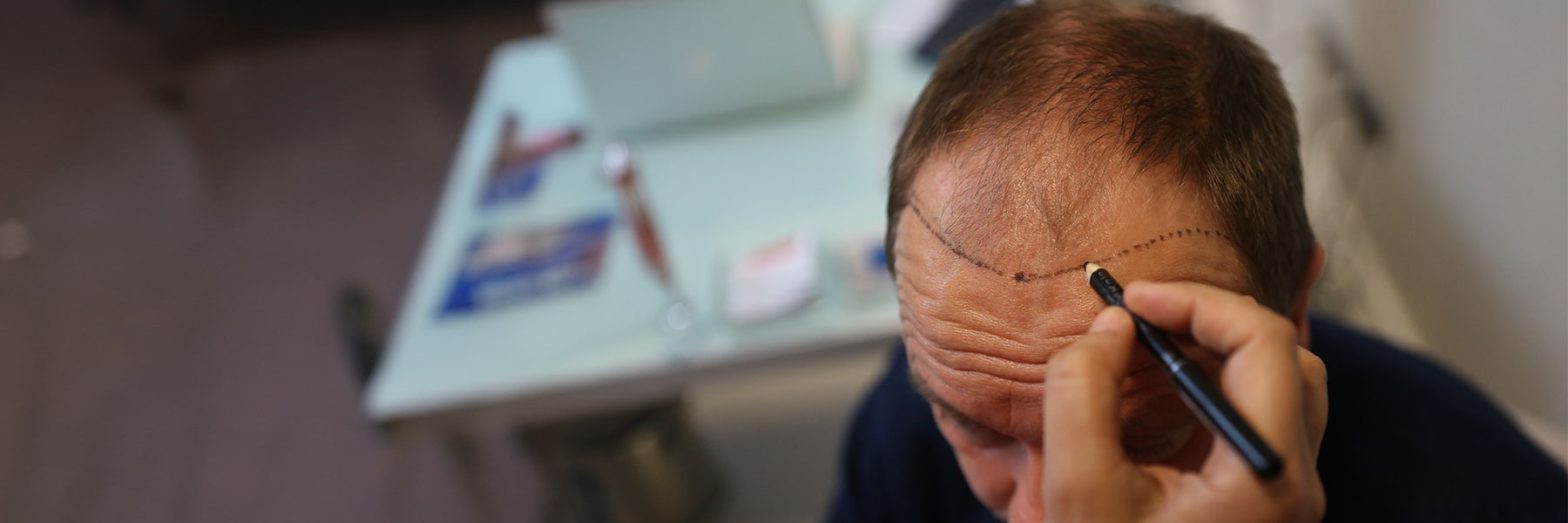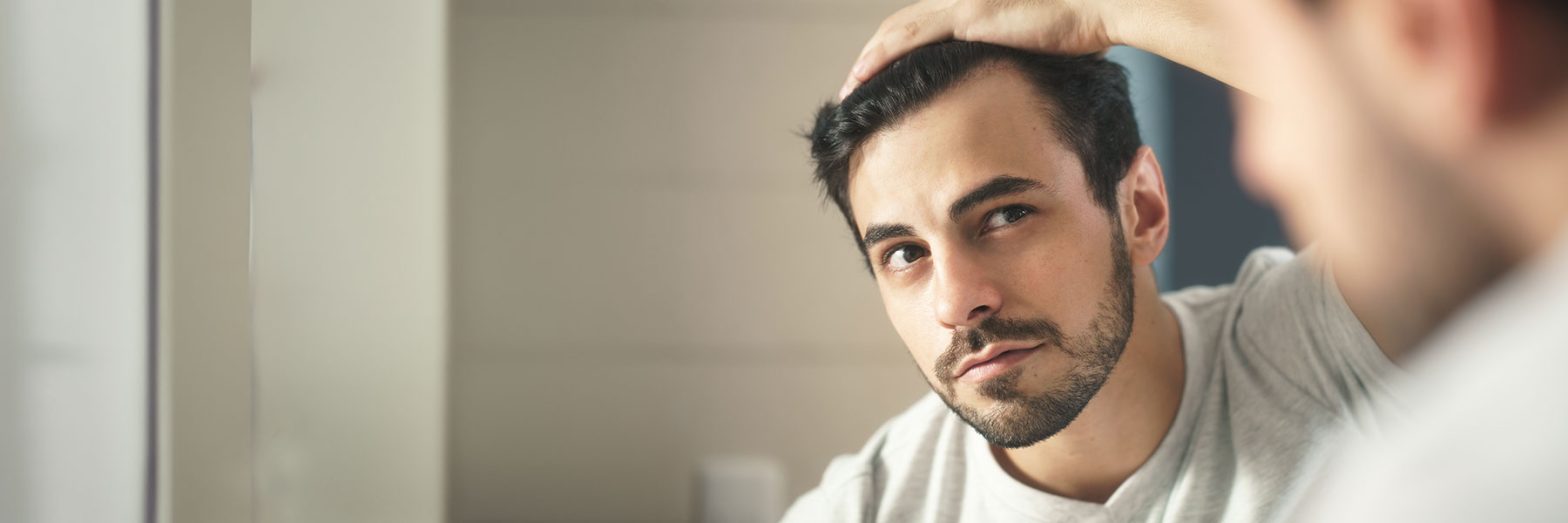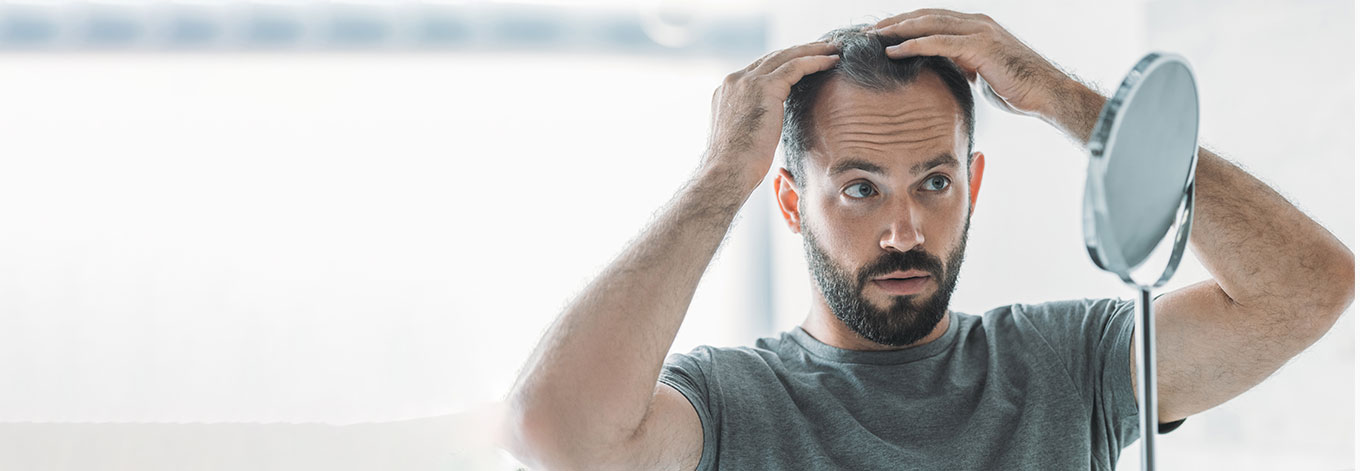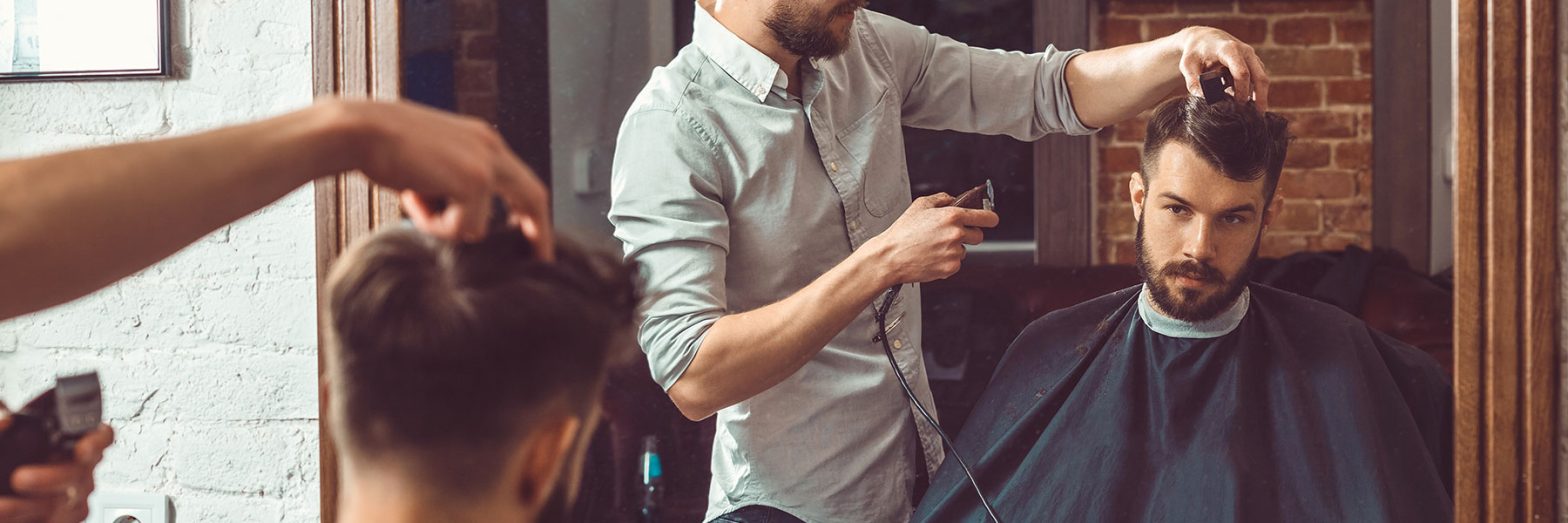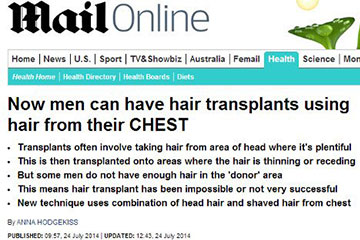
Now men can have hair transplants using hair from their chest
HAIR LOSS & HAIR TRANSPLANTS
Mail Online
They have transformed the appearance of men around the world.
From Wayne Rooney to Gordon Ramsay, thousands of men now undergo a hair transplant each year in a bid to get thicker locks.
The process can be painstaking – and often involves removing healthy hair follicles directly from an area at the back of the patient’s head where the hair is usually plentiful.
This ‘excess’ hair is then transplanted onto areas where the hair is thinning or receding – usually the crown – a technique known as Follicular Unit Extraction (FUE).
But until now, there has been little available for men who are already thinning all over – meaning they are either deemed unsuitable or the transplant is barely effective.
Now a new technique is using a mix of head hair and that from other parts of the body – most commonly the chest.
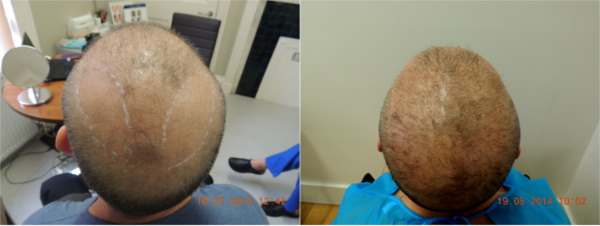
London-based Dr who performs the body hair transplant, said: ‘For some patients a straightforward transplant, using only hairs from the head, is not possible.
‘In these cases it may be an option for us to look at using hair from their chest to help us achieve a greater level of density and therefore improving the overall result.’
However she acknowledged the hair on a man’s head is ‘quite different from that on their head’.
‘It is thicker, curlier and more wiry. So it is not possible to take a man who is totally bald on top and use hair from their chest as the only source of hair for the transplant.
‘The final result would be unnatural looking and undesirable – so in every instance we would want to keep hair used from the chest to a minimum.’
As a result, a patient always needs to be able to ‘donate’ some hair from the back of their head to the area requiring the transplant, said Dr who works at The Private Clinic in Harley Street.
‘But on instances where this hair at the back is thinning, using body hair for part of the treatment may be a viable option for some patients.’
HOW IS THE TREATMENT DONE?
In order to perform the procedure, the surgeon will normally shave the patient’s chest first.
The treatment, known as Follicular Unit Extraction (FUE), involves removing healthy hair follicles directly from a donor area at the back of the patient’s head where the hair is plentiful, and transplanting these hairs onto areas where the hair is thinning or receding.
The body hairs are then transplanted in the same way as they would be if taken from the head – in that they are removed individually and carefully transplanted onto the target area.
An FUE procedure can last many hours, depending on the number of hairs which require transplanting.
The average transplant costs around £10,000 or £2.50 a hair. For chest hair the price rises to £5 per hair.
The patient can leave the clinic immediately after treatment. For around a week following treatment the head and the donor area may appear red and may be slightly swollen in places.
During this time the patient should not take part in any rigorous exercise or sporting activity.
The patient will also experience a period known as ‘shedding’ following the procedure.
This is where the superficial hair follicles, which have been transplanted, fall out of the head, enabling the roots to embed and settle in their new location and go on to grow healthily.
How long this period lasts for, and the number of hairs which are shed, differs from patient to patient.




